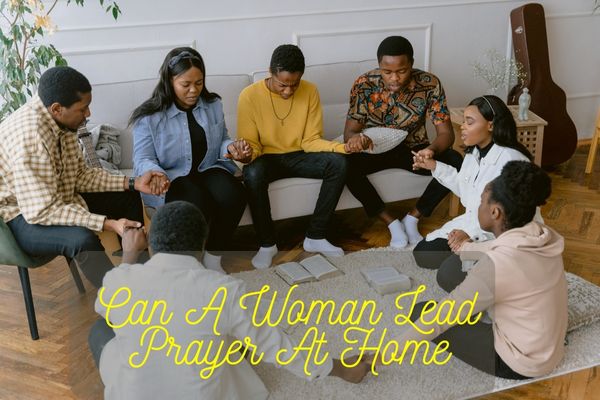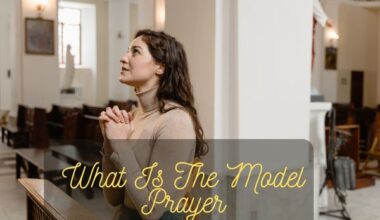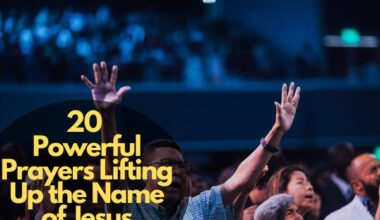In contemplating the question, “Can a woman lead prayer at home?” we unravel woven traditions, spirituality, and the evolving landscapes of gender roles in religious practices.
This query extends beyond a mere exploration of religious norms; it probes the very essence of inclusivity, equality, and spiritual empowerment. It beckons us to navigate the intricate corridors of cultural heritage, theological interpretations, and societal paradigms.
Within this inquiry lies a mosaic of perspectives, each reflecting historical echoes, contemporary debates, and the yearning for spiritual connectivity.
By looking into the heart of prayer leadership, we embark on a journey to fathom not just the question itself but the profound implications it holds for individuals, communities, and the diverse belief systems worldwide.
Can A Woman Lead Prayer At Home
Prayer is a significant aspect of religious and spiritual practice, offering individuals a way to connect with the divine and seek guidance, solace, and spiritual growth. One question that often arises is whether a woman can lead prayer at home. In this article, we will explore various perspectives on this topic, considering historical and cultural context, scriptural interpretations, personal empowerment, and the importance of inclusive worship.
Understanding Prayer Leadership
Before addressing the question of women leading prayer at home, it is important to understand the concept of prayer leadership. Prayer leadership typically involves guiding a group or congregation in communal prayer, often carried out by religious leaders or designated individuals within a specific religious tradition. However, when it comes to prayer at home, the dynamics and considerations may differ.
Perspectives on Women Leading Prayer
The question of whether a woman can lead prayer at home is subject to diverse perspectives influenced by cultural, religious, and personal beliefs. Some religious traditions and communities embrace the idea of women leading prayer at home, recognizing the importance of gender equality and inclusive spiritual practices. Others may hold more traditional views that restrict prayer leadership roles primarily to men.
Historical and Cultural Context
Examining the historical and cultural context is crucial in understanding the dynamics of women leading prayer at home. In some societies and time periods, women have played active roles in leading prayer within the privacy of their homes. However, societal norms and religious interpretations have evolved over time, leading to varying practices and limitations.
Scriptural Interpretations
Scriptural interpretations play a significant role in shaping perspectives on women leading prayer. Different religious texts may offer diverse perspectives on this matter. Some scriptural passages may be interpreted as supporting gender equality and inclusive worship, while others may be interpreted as assigning specific roles and responsibilities to men and women within the context of prayer.
The Role of Intent and Sincerity
Regardless of the specific cultural or religious context, the role of intent and sincerity in prayer is paramount. The focus should be on the spiritual connection and devotion rather than merely the gender of the prayer leader. If a woman feels called to lead prayer at home with a sincere intention and a genuine desire to connect with the divine, many believe she should be encouraged and supported in her spiritual practice.
Empowerment and Personal Spiritual Practices
Allowing women to lead prayer at home can be seen as an empowering practice that recognizes their spiritual agency and fosters personal growth. It provides an opportunity for women to develop their own relationship with the divine, express their faith, and engage in meaningful spiritual practices within the privacy of their homes.
Community and Congregational Dynamics
The acceptance of women leading prayer at home also depends on the dynamics of the community or congregation. Some religious communities are more inclusive and open to diverse forms of worship, while others may have stricter traditions and norms. Creating spaces that value and encourage the participation of women in prayer leadership can contribute to a more inclusive and egalitarian spiritual environment.
The Importance of Inclusive Worship
Inclusive worship is a vital aspect of spiritual communities. Embracing gender equality and recognizing women’s leadership roles in prayer can strengthen the sense of belonging and engagement for all members. It promotes a more comprehensive understanding of spirituality and fosters an environment where diverse voices are heard and respected.
Challenges and Controversies
It is important to acknowledge that the question of women leading prayer at home is not without challenges and controversies. Traditional interpretations, cultural norms, and institutional barriers can create resistance to change. Engaging in open and respectful dialogue, addressing concerns, and promoting education can help overcome these challenges and foster greater inclusivity.
Overcoming Barriers
Overcoming barriers to women leading prayer at home requires a collective effort. This includes challenging and reevaluating existing norms and beliefs, promoting gender equality within religious institutions, providing education on scriptural interpretations that support inclusivity, and fostering supportive and empowering environments for women’s spiritual practices.
Nurturing an Inclusive Spiritual Environment
Creating an inclusive spiritual environment involves recognizing and celebrating the diverse contributions and leadership of women in prayer. It requires ongoing dialogue, education, and the dismantling of gender biases and stereotypes. By embracing women’s participation and leadership in prayer at home, individuals and communities can nurture a more inclusive and egalitarian spiritual space.
Conclusion
The query, “Can a woman lead prayer at home?” serves as a nexus where tradition converges with modernity and spirituality intertwines with societal norms. Its resolution transcends the boundaries of gendered perceptions, advocating for inclusivity, equity, and the unbinding of spiritual potential.
Embracing the prospect of women leading prayer at home represents a paradigm shift—a catalyst for redefining conventional roles and fostering an environment where spiritual leadership knows no gender. It symbolizes a pivotal step toward embracing diversity, nurturing empowerment, and cultivating a space where every voice, regardless of gender, finds resonance in the universal chorus of faith and devotion.
As the discourse unfolds and perspectives evolve, this question stands as a beacon guiding us toward a more inclusive, equitable spiritual landscape.
Frequently Asked Questions
1. Can women lead prayer in religious institutions?
- While practices vary among different religious institutions, many have embraced the inclusion of women in prayer leadership roles. However, some religious traditions may still maintain more traditional views that limit women’s involvement in certain aspects of prayer leadership.
2. Are there historical examples of women leading prayer?
- Yes, there are historical examples of women leading prayer within various religious traditions. These examples highlight the diversity of practices and the evolving roles of women in spiritual leadership throughout history.
3. How can individuals support women’s leadership in prayer at home?
- Individuals can support women’s leadership in prayer at home by promoting inclusivity, challenging gender biases, advocating for equal opportunities, and fostering supportive environments that recognize and celebrate women’s spiritual agency.






